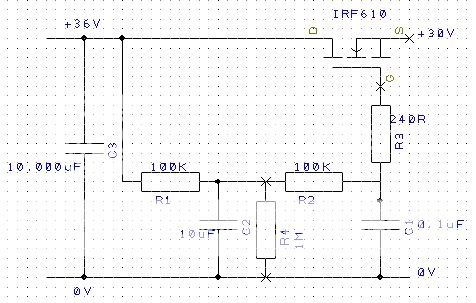No free samples .........
Ah well, I will try another route.
By the well the circuit that is evolving here is rather similar to the classice Pass Labs Aleph P1.7 preamplifier. It uses the IRF610 (a favourite of Mr Pass I believe) but relies on a zener stack to provide regulation as it does not have a downstream regulator.
It has a 221 ohm gate resistor very close to the Fet to prevent oscillations.
Ah well, I will try another route.
By the well the circuit that is evolving here is rather similar to the classice Pass Labs Aleph P1.7 preamplifier. It uses the IRF610 (a favourite of Mr Pass I believe) but relies on a zener stack to provide regulation as it does not have a downstream regulator.
It has a 221 ohm gate resistor very close to the Fet to prevent oscillations.





